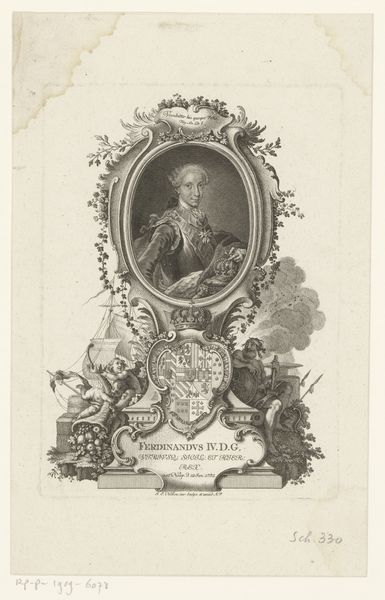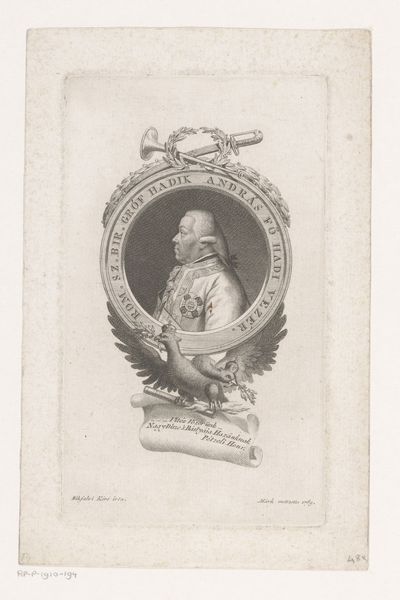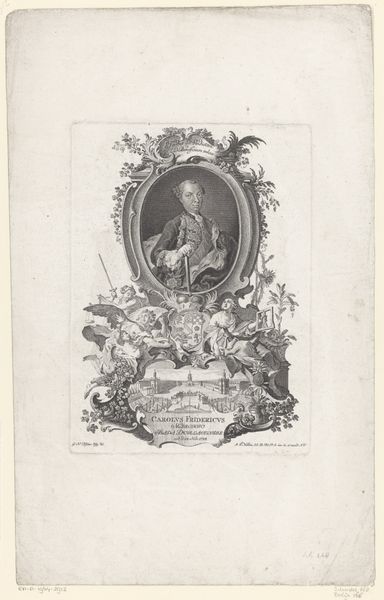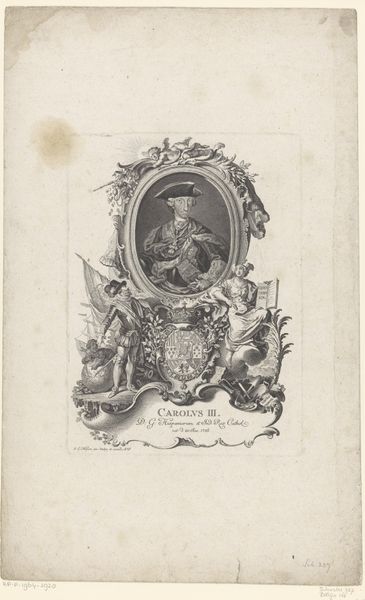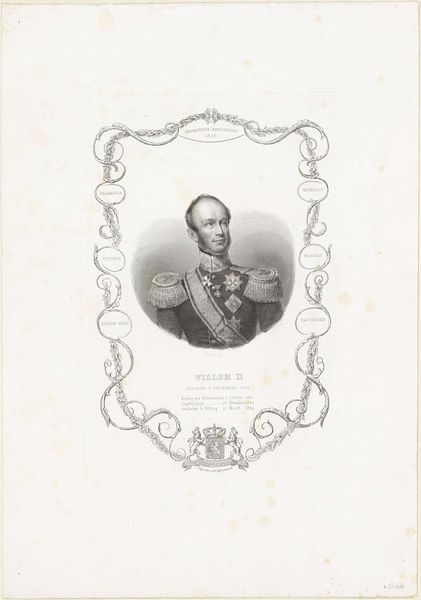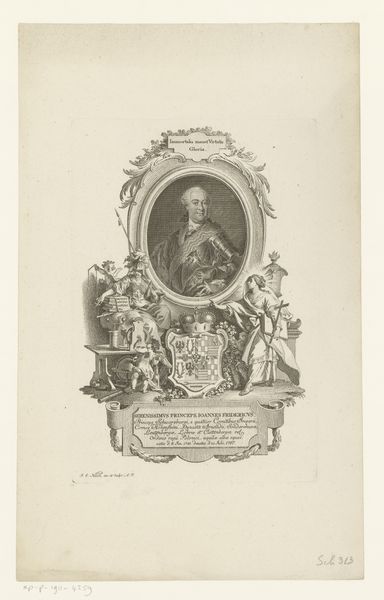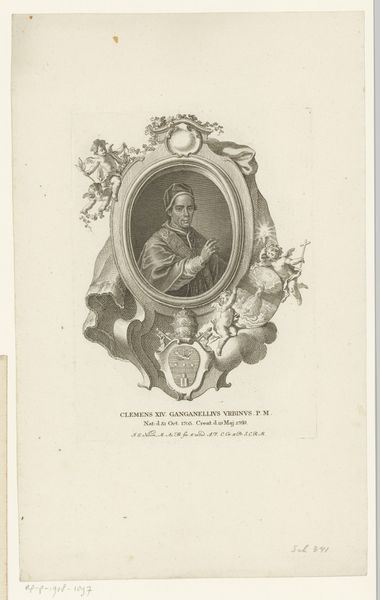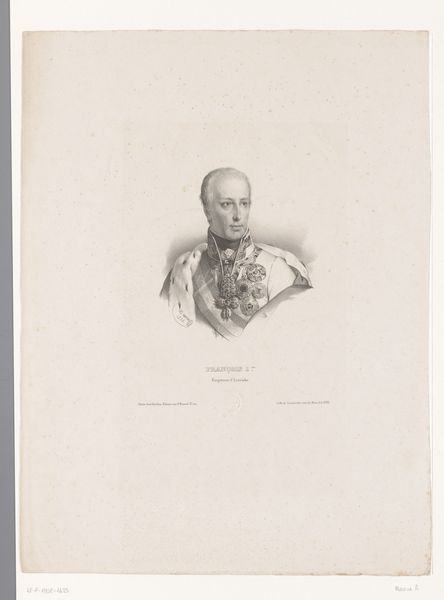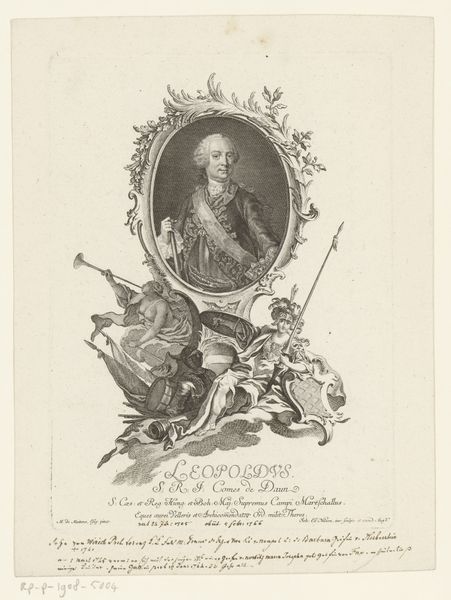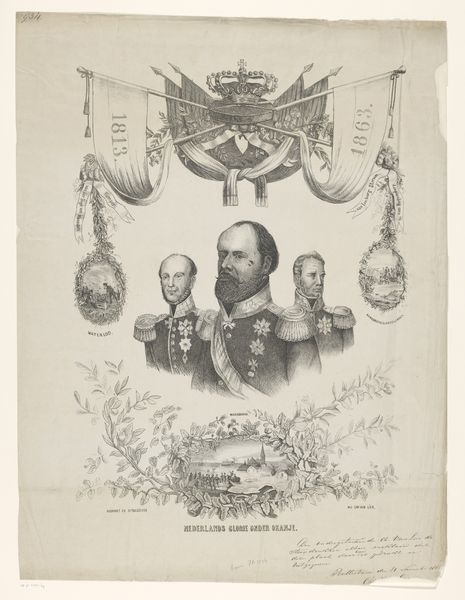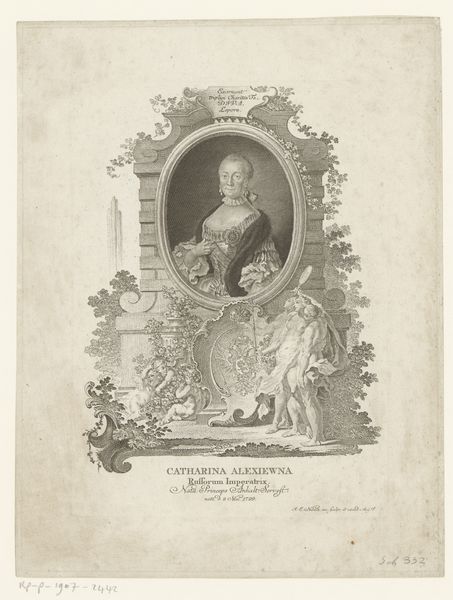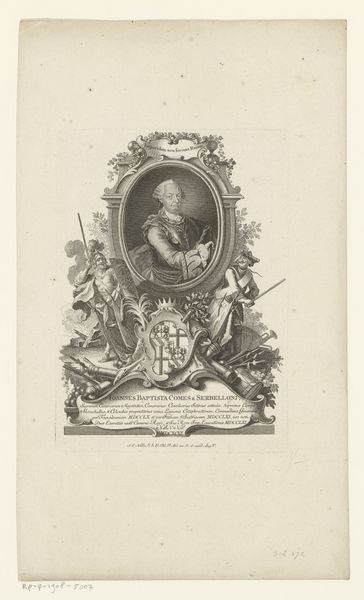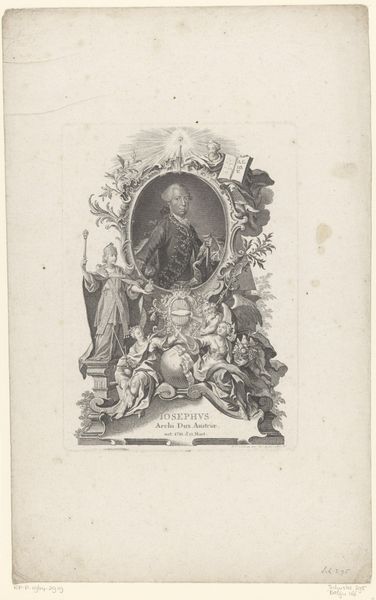
print, engraving
#
portrait
# print
#
old engraving style
#
classical-realism
#
history-painting
#
academic-art
#
engraving
Dimensions: height 374 mm, width 302 mm
Copyright: Rijks Museum: Open Domain
Editor: Here we have an engraving from sometime between 1840 and 1846. It's titled "Portret van Willem II, koning der Nederlanden," so, a portrait of King William II of the Netherlands. It's quite formal and symbolic. How do you interpret all these visual elements surrounding him? Curator: The layering of symbols is fascinating. The oak and laurel branches signal strength and victory – universal signs but amplified when framing a monarch. It’s interesting to consider the context. Post-Waterloo, what do these symbols communicate to the Dutch populace? Is it simply strength, or something more nuanced given the nation's complex political history? Editor: That’s a great point. I didn’t immediately connect it to Waterloo. Curator: And what about the regalia itself: the lion rampant, the armaments... these all carry cultural weight, signaling lineage, military power, and national identity. Do they project a message of stability or perhaps hint at a need to project power during a time of change? Editor: They definitely emphasize authority and a connection to tradition, especially the lion, but is there any intention of propaganda involved? Curator: It's possible, or at least, a conscious effort to reinforce a certain image. Images have always been powerful tools for constructing and maintaining cultural narratives. Look at the star atop the image referencing Waterloo: symbols build collective memory. Does it create or just sustain an understanding of their shared past? Editor: So much to consider beyond just the likeness of the King. This engraving functions almost as a cultural touchstone. Curator: Precisely! It reminds us how carefully crafted images can shape not just our perception, but our very understanding of history and identity.
Comments
No comments
Be the first to comment and join the conversation on the ultimate creative platform.
